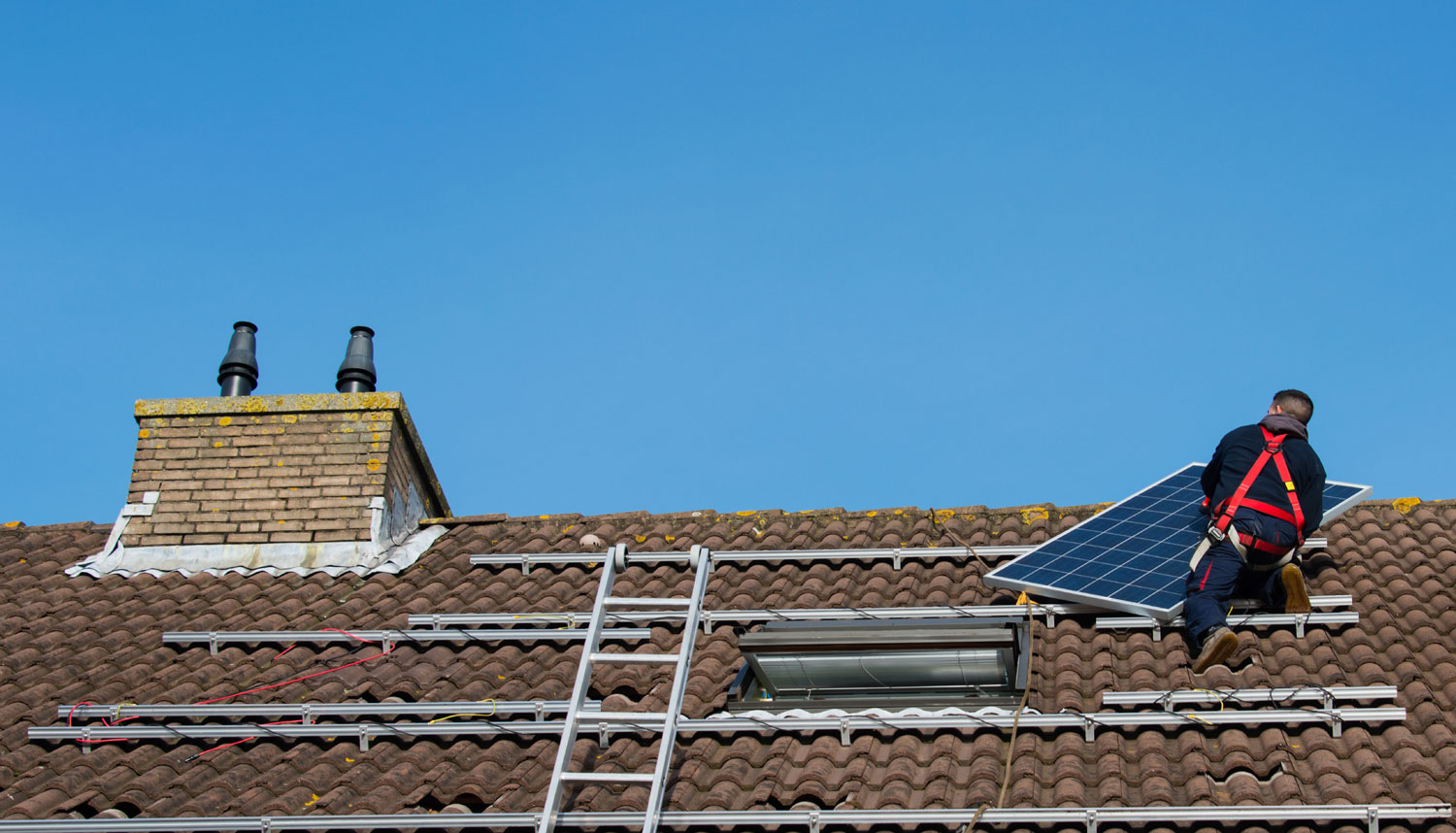Understanding PV Wiring in Series, Parallel and Polystring

Module stringing and the question of how many and in which orientations, voltage windows and, lest we forget, available roof space, play pivotal roles in system design. To properly design a system, it’s imperative to know how stringing impacts the total power delivered to an inverter.
With the vast possibilities in stringing, today’s inverter technology offers unforeseen abilities to capitalize on creative module stringing. Inverters like the Sunny Boy TL-US, with dual maximum power point tracking channels and built-in string combiners make it easy for customers without south-facing roofs to enjoy the same benefits from generating their own power.
See the power
A good way to visualize how electricity works is to relate it to something that we are already familiar with; let’s consider water.
Imagine a water tank that is full and with a half-inch opening at the bottom, the pressure from the full tank would force the water through the opening really fast. That same tank with a one-inch opening would disperse more water with less constriction.
Now, if the water tank was only half full, the pressure wouldn’t be as strong and it wouldn’t move nearly as much water. In this analogy, voltage is the water pressure, current is the size of the opening and wattage is the total amount of water that is displaced.

An example of stringing the Sunny Boy TL-US with polystring configurations for both tracking channels.
Solar stringing 101
When wiring module strings together, which happens in series (e.g. positive to negative), voltage is increasing while current stays constant. When wiring multiple module strings together in parallel (e.g. positive to positive and negative to negative), current is increasing while voltage stays constant.
Looking at the adjacent image: Channel A and Channel B have two strings each that are wired in parallel on the DC combiner inputs at the inverter. The total number of modules on each channel is different, but the number of modules on each string within Channel A and B are the same (eight on Channel A, five on Channel B).
When wiring strings in parallel the current is additive, great for designing parallel strings with different orientations because the variable current will not constrict the other string. This is referred to as a polystring configuration.
Inverters like the Sunny Boy TL-US are ideally suited for systems using polystring configuration, a great design tool to have when southern roof space can’t fit the needed amount of modules or a home’s roof faces southwest and southeast. To stick with the water tank analogy, it’s like having two separate tanks so the pressure from one tank won’t adversely affect the other, yet the amount of water that comes out is the amount that’s needed.

What bothers me with SMA is that the shutdown box output per channel is 20 amps but each terminal in the inverter is only 10amps this possibly losing half the production on that channel/string
Great explanation on how solar panel works. Thanks for the information.
Hello, I have a question… I want 6 PV panels, two by two (east & west) in parallel and the three pairs in series. Is that posible?
I hope to see in the morning The three east side panels preform well and in the afternoon the westside panels preform well. All three east west parallel PV-panel pairs will be connected in series to get higher voltage and go to my one input PV inverter. Is this a good, cheap and smart solution? Or will this not work?
Thanks for your answer!
Philip – The Netherlands.
Hello Ronnie. I have just read your article “Basic Photovoltaic Stringing Terminology” and have a few questions. My customer is using a SunnyBoy 7.7. The design has 4 arrays each array consist of strings of 4, 14 (east facing), 13 and 8 (west facing). Do you reccomend combining the strings or can i run each string to the inverter. I’ve noticed in the DC disconnect that there are 2 inputs in the channel (A- has 2 inputs), can I run all the strings into the inputs of the inverter? Thank you for your time. I appriciate it.